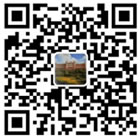Nature | Zhang Hongbo/Sarah Teichmann Collaborate to Establish the First Single-Cell Atlas of Human Limb Development and Decipher Key Regulatory Mechanisms
The formation of our limbs during development is not a one-step process, but rather a complex cellular evolution process. Limb development abnormalities are one of the most commonly reported birth syndromes worldwide, with one case found in approximately every 500 newborns globally. As limb development involves two classic developmental issues—cell fate determination and spatial positioning— it has long been studied as an important model in developmental biology. In recent years, the development of single-cell technology has made it possible to directly study cell fate determination and spatial positioning in human limb development.
On December 6, 2023, Professor Zhang Hongbo's research group from Sun Yat-sen School of Medicine, along with researchers from the Sanger Institute, published a research paper titled "A human embryonic limb cell atlas resolved in space and time" in the journal Nature. The study reported the establishment of the first single-cell atlas of human limb development based on single-cell transcriptomics and spatial transcriptomics technologies, deciphering the cellular evolution pathways and cellular spatial positioning determination processes from the early stages of limb development to complete morphological formation.
In this study, Professor Zhang Hongbo's research group from Sun Yat-sen University, in collaboration with researchers from the Sanger Institute, first used single-cell transcriptomics technology to leverage the continuity of the cell evolution process during limb development. They sampled from multiple periods and different individuals to create a continuous evolution map of all cell types in human limb development. Subsequently, the researchers combined spatial transcriptomics technology to accurately locate the exact positions of cells in the developing limbs and the rules of cell position changes over developmental time. With this atlas, researchers can track cell types produced at specific times and regions, identify new cell types, and provide detailed characterizations of the specific gene expression programs activated in these cell types. These temporal gene expression patterns often play a crucial regulatory role in shaping the growing limbs.
As part of the research, the researchers demonstrated that these gene patterns affect the formation of fingers and toes, identifying key regulatory genes. Staining of tissues clearly revealed how the original cell types that make up fingers and toes arrange themselves differently to form the rudiments of fingers and toes, and identified the specific expression genes of the corresponding cell types. When the expression of these genes does not follow established patterns, it can lead to specific developmental phenotypes, such as brachydactyly (short fingers or toes) and polydactyly (extra fingers or toes) developmental abnormalities, among others.
The researchers also focused on the cell development patterns of skeletal muscles that make up the limbs and tissues developed from limb mesenchymal cells. The study clearly identified two pathways for the formation of human skeletal muscles and specific expression genes for each pathway, which provides important clues for further determining the key regulatory genes and mechanisms of cell fate divergence in skeletal muscle formation. Interestingly, the study found that the PITX1 gene, which regulates the differential determination of upper and lower limbs, may have a unified mechanism in regulating the formation of skeletal muscles in different limbs. The research team also obtained single-cell transcriptome data for the development of mouse limbs, finding that many aspects of limb development are highly similar between humans and mice.
In summary, the study parsed the complex anatomical structure of the human limb at the single-cell level and in 2D spatial structure, providing an important reference for further cross-species in-depth study of the detailed regulatory mechanisms of limb development, the cellular physiological mechanisms of limb development abnormalities, and broader developmental and regenerative processes of cell fate regulation mechanisms and spatial positioning construction mechanisms.
Professor Zhang Hongbo from Sun Yat-sen University and Professor Sarah Teichmann from the Sanger Institute are the co-corresponding authors of the paper. Zhang Bao (a postdoctoral fellow in Professor Zhang Hongbo's research group, originally a doctoral student), Peng He (a postdoctoral fellow in Professor Sarah Teichmann's research group), John Lawrence (a doctoral student in Professor Sarah Teichmann's research group), and Wang Shuaiyu (a postdoctoral fellow in Professor Zhang Hongbo's research group, now working at Guangzhou Women and Children's Medical Center) are the co-first authors of the paper. The research was supported by the National Key R&D Program, the National Natural Science Foundation of China, the UK Wellcome Trust, and other funding sources.
Professor Zhang Hongbo's research group from Sun Yat-sen University's Sun Yat-sen School of Medicine uses single-cell sequencing, biochemistry and molecular cell biology, model animals, and human disease models to study the impact of cellular fate in processes such as energy metabolism, aging, development, and regeneration. Postdocs interested in the above directions are welcome to join, and inquiries for graduate studies are also welcome.
Original Article Link: //www.nature.com/articles/s41586-023-06806-x


